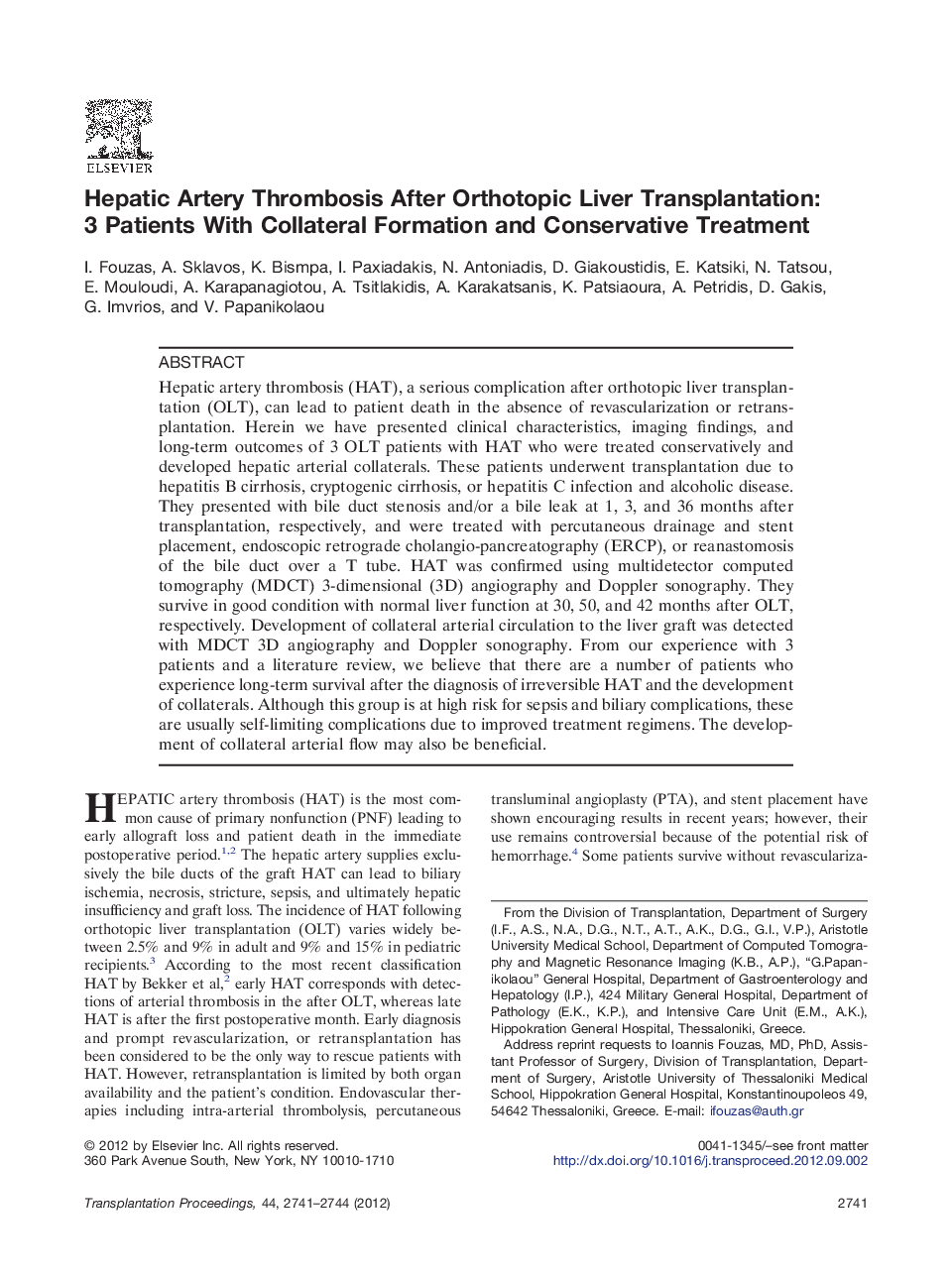| Article ID | Journal | Published Year | Pages | File Type |
|---|---|---|---|---|
| 4256312 | Transplantation Proceedings | 2012 | 4 Pages |
Hepatic artery thrombosis (HAT), a serious complication after orthotopic liver transplantation (OLT), can lead to patient death in the absence of revascularization or retransplantation. Herein we have presented clinical characteristics, imaging findings, and long-term outcomes of 3 OLT patients with HAT who were treated conservatively and developed hepatic arterial collaterals. These patients underwent transplantation due to hepatitis B cirrhosis, cryptogenic cirrhosis, or hepatitis C infection and alcoholic disease. They presented with bile duct stenosis and/or a bile leak at 1, 3, and 36 months after transplantation, respectively, and were treated with percutaneous drainage and stent placement, endoscopic retrograde cholangio-pancreatography (ERCP), or reanastomosis of the bile duct over a T tube. HAT was confirmed using multidetector computed tomography (MDCT) 3-dimensional (3D) angiography and Doppler sonography. They survive in good condition with normal liver function at 30, 50, and 42 months after OLT, respectively. Development of collateral arterial circulation to the liver graft was detected with MDCT 3D angiography and Doppler sonography. From our experience with 3 patients and a literature review, we believe that there are a number of patients who experience long-term survival after the diagnosis of irreversible HAT and the development of collaterals. Although this group is at high risk for sepsis and biliary complications, these are usually self-limiting complications due to improved treatment regimens. The development of collateral arterial flow may also be beneficial.
